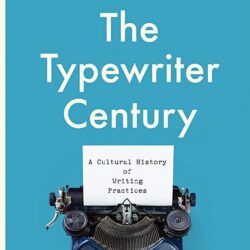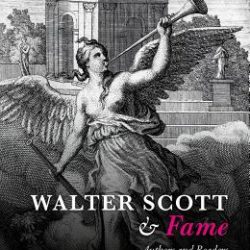Martyn Lyons’s The Typewriter Century, A Cultural History of Writing Practices takes the machine as a starting point to examine its relationship to work, creative and otherwise and, like Hazzard’s novel, finds a complex network of relationships that it creates or facilitates. This social and literary history is interspersed with reckonings on gender and labour as Lyons considers the technical, personal and even mythical roles that the typewriter played in offices, homes and imaginations for most of the twentieth century.
Tag: authorship
Sheila Liming. What a Library Means to a Woman: Edith Wharton and the Will to Collect Books.
The 2,700-plus books at the Mount, Edith Wharton’s historic Berkshire estate, represent only a portion of the novelist’s remarkable collection. Another 2,500 volumes, which one of Wharton’s heirs stored in a London warehouse after her death, were destroyed in the Blitz. And the volumes now in the Mount’s collection themselves survived storage in an English castle (some have the wormholes to show for it) and in a bookseller’s attic before a high-profile (and contentious) negotiation brought them to the Mount in 2006.
The Oxford Handbook of Publishing. Edited by Angus Phillips and Michael Bhaskar.
For this handbook, Angus Philipps, director of the Oxford International Centre for Publishing, well-known to the publishing studies world as the co-author of Inside Book Publishing (sixth edition 2019) and editor-in-chief of LOGOS, joined forces with London-based industry insider Michael Bhaskar, author of The Content Machine (2013) and Curation: The Power of Selection in a World of Excess (2016). The 25 chapters, written by an impressive range of experts from mostly anglophone backgrounds, can be used as stand-alone introductions to research areas and questions pertaining to publishing and book studies.
Soledad Acosta de Samper Digital Library. University of Los Andes: 2019.
Coordinated by Dr. Carolina Alzate, in association with the University of Los Andes and the National Library of Colombia, the Soledad Acosta de Samper Digital Library (Biblioteca Digital Soledad Acosta de Samper, in Spanish) is a Spanish-language project that seeks to provide open access to the complete works of Colombian author Soledad Acosta de Samper (1833-1913). Now recognized as one of that nation’s most important authors, Acosta de Samper was all but forgotten until Hispanic female scholars such as Monserrat Ordóñez awakened a renewed interest in her writings during the 1980s. Thanks to these efforts, Acosta de Samper is now appreciated for her remarkable literary prolificacy and ardent advocacy of women’s education and equal rights during a time when women were typically relegated to a supporting role in Colombian society. The author’s works were digitized in 2013 as part of the Colombian Ministry of Culture’s “Year of Soledad Acosta de Samper” celebrations, and the Soledad Acosta de Samper Digital Library organizes those products of her rich intellectual life into an easy-to-navigate website.
Robert Mayer. Walter Scott and Fame. Authors and Readers in the Romantic Age
Professor Mayer’s book is an insightful, eye-opening exploration of the emergence of a new type of literary celebrity at the beginning of the nineteenth century based on close readings of Walter Scott’s correspondence. Considered by Byron himself as “the first man of his time,” Scott is an ideal case study due to the immense popularity he enjoyed during his lifetime as a result of his poetic and novelistic output, especially the Waverley cycle. Beautifully contextualized through comparisons with predecessors such as Pope and Johnson, contemporaries such as Wordsworth, Southey, and Byron, and successors such as Dickens, Hardy, and Hemingway, this study sheds considerable light on the evolution of literary celebrity in general and on the brand of celebrity that Walter Scott embodied in the public consciousness of his time in particular.





